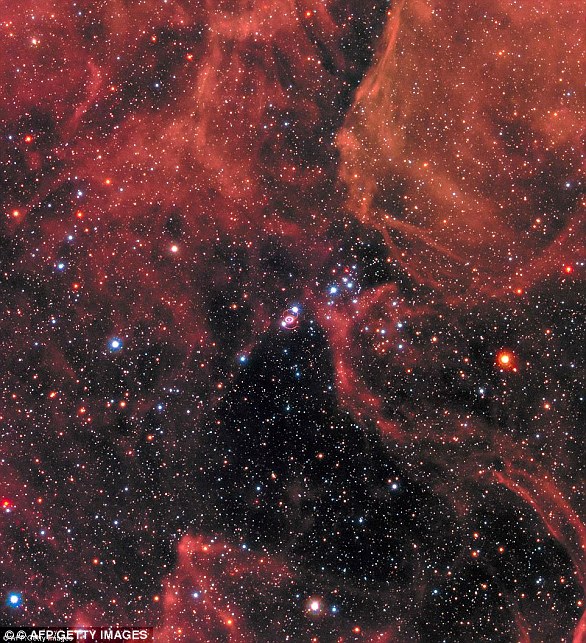Scientists have taken the first ever close-up image of a star outside our own galaxy – and some fantasy fans might find it strikingly familiar.
The ‘Behemoth Star’ WOH G64 is located a staggering 160,000 light-years from Earth in a neighbouring galaxy called the Large Magellanic Cloud.
Although scientists have known about this star for decades, it is only now that technological advances have made it possible to see it up close.
The incredible image reveals a bright core surrounded by an ‘egg-shaped’ cocoon of dust and gas that looks just like the Eye of Sauron from the Lord of the Rings.
However, scientists say that the star’s iris-shaped ring is actually a sign that this red supergiant could be on the brink of collapse.
The researchers found that the dying star has grown dimmer in the last 10 years as it jettisons its outer layers into space.
Co-author Dr Jacco van Loon, director of the Keele Observatory at Keele University, told MailOnline: ‘Other distant supernova explosions often indicate the star had thrown off a lot of material in the years or decades prior to the explosion.
‘If this is what WOH G64 is doing at the moment, then we might well see it explode in our lifetime.’
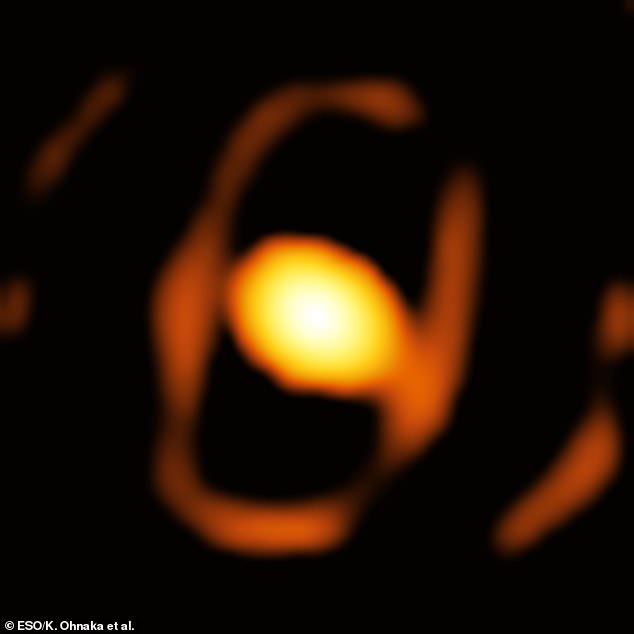
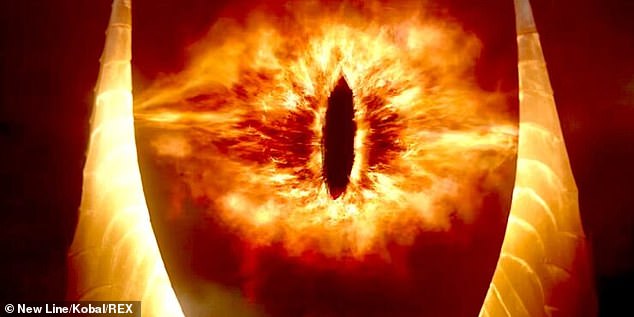
Although stars are massive, the incredible distances that separate them from the Earth make them extremely difficult to image.
Even when it comes to stars inside our galaxy, astronomers have only been able to produce images of around two dozen stars such as Betelgeuse, the nearest red supergiant to the Sun.
To truly image a star outside the Milky Way and hundreds of thousands of light-years from Earth requires the use of a specialised technique called ‘interferometry’.
This is where multiple telescopes combine their information to act as if they were a single huge lens as wide as the distance between them.
By combining the data from multiple large telescopes, astronomers can get previously impossible levels of detail from objects incredibly far from Earth.
Using this technique, the researchers merged images from the European Southern Observatory’s (ESO) Very Large Telescope Interferometer (VLTI) four 8-metre wide telescopes.
This finally allowed the researchers to record a close-up image of WOH G64.
Lead author Dr Keiichi Ohnaka, an astronomer from the Universidad Andrés Bello in Chile, says: ‘For the first time, we have succeeded in taking a zoomed-in image of a dying star in a galaxy outside our own Milky Way.’
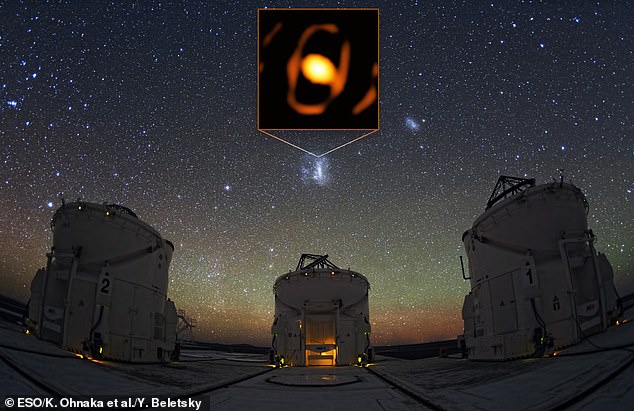
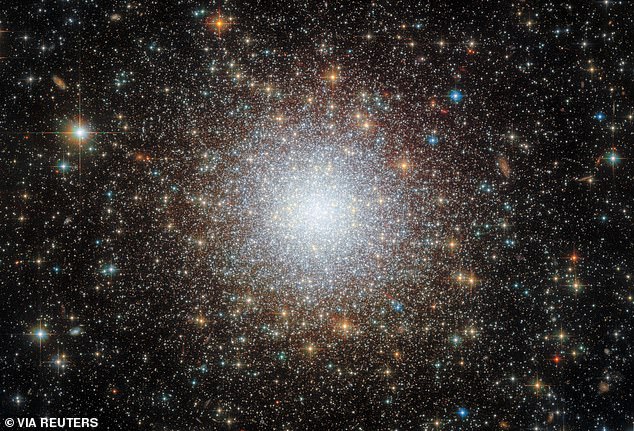

While the researchers say they were mainly trying to prove these images were possible, they also discovered something unexpected about the Behemoth Star.
Dr Ohnaka says: ‘We discovered an egg-shaped cocoon closely surrounding the star.
‘We are excited because this may be related to the drastic ejection of material from the dying star before a supernova explosion.’
When a star expends the last of its hydrogen fuel, the balance of forces that keep it stable begins to fail and the star collapses in on itself.
As the outer layers fall inwards, the area around the core becomes so hot that it starts to fuse hydrogen atoms into helium.
The immense amounts of energy generated by this process cause the star to balloon into a vast red giant like WOH G64 and blasts the outer layers away into space.
Compared to observations made in 2005 and 2007, the researchers noted that WOH G64 has become significantly dimmer in the intervening decade.
The researchers believe that this dimming and the egg-shaped cocoon could be due to the star having ‘thrown off its mantle’ – a critical change that has never before been seen while happening.
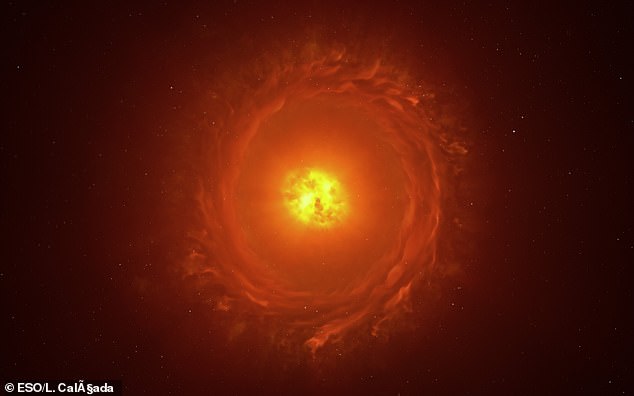
Co-author Professor Gerd Weigelt, of the Max Planck Institute for Radio Astronomy, says: ‘We have found that the star has been experiencing a significant change in the last 10 years, providing us with a rare opportunity to witness a star’s life in real-time.’
While some stars remain red supergiants for tens of thousands of years before exploding, the sudden change suggests there is a chance WOH G64 could blow relatively soon.
This groundbreaking image, therefore, is an unprecedented opportunity to watch the final days of a dying star.
The researchers are already planning further observations of the star to learn more about what is going on.
And, as ESO prepares to further upgrade the VLTI’s equipment, even better images may soon be on their way.
Dr Loon concludes: ‘To have been able to take the image is a first step to see directly what is going on around some of the rarest types of stars, when they are doing wild things before dying that are hard to catch in the act.
‘We had not expected to see this star do something really dramatic, and to have imaged that will help us understand the final phases in the lives of massive stars before they explode.’

